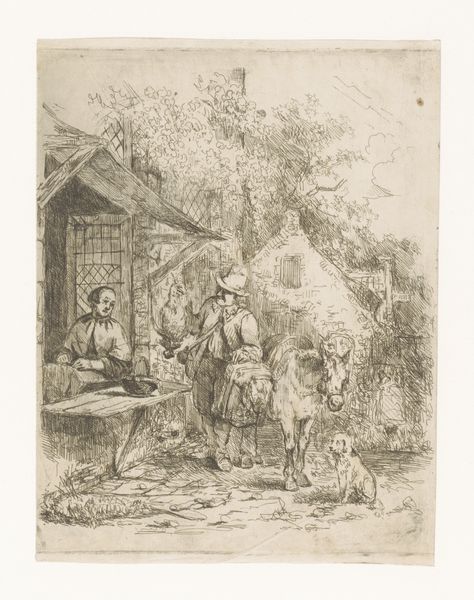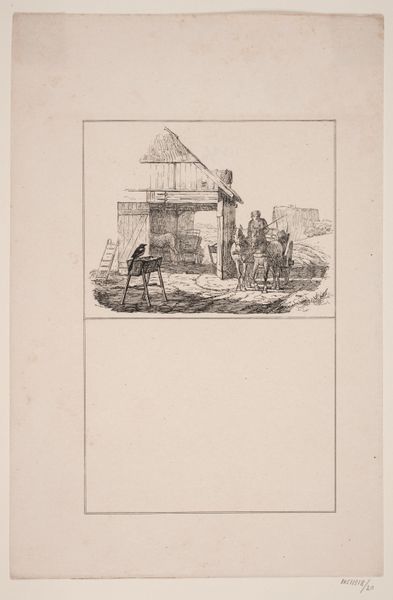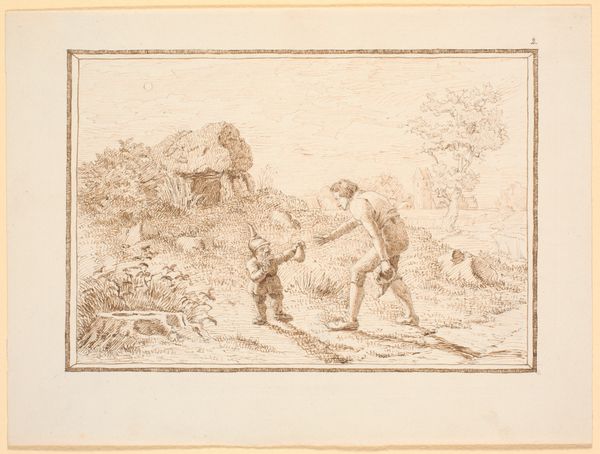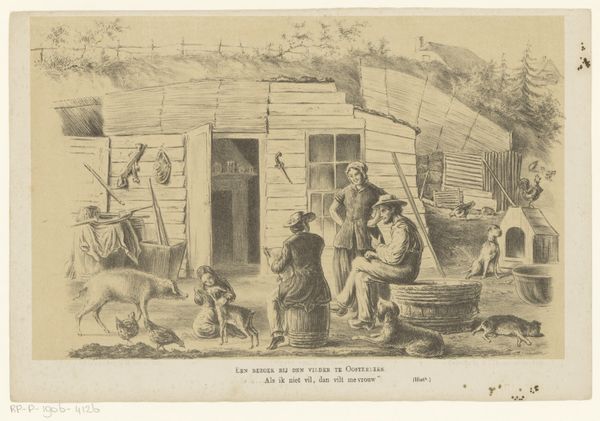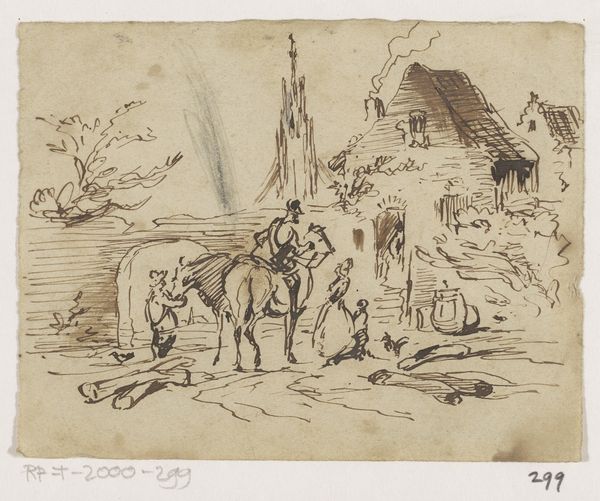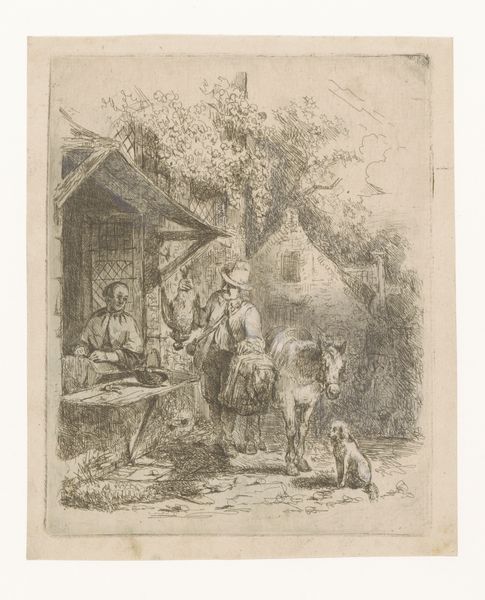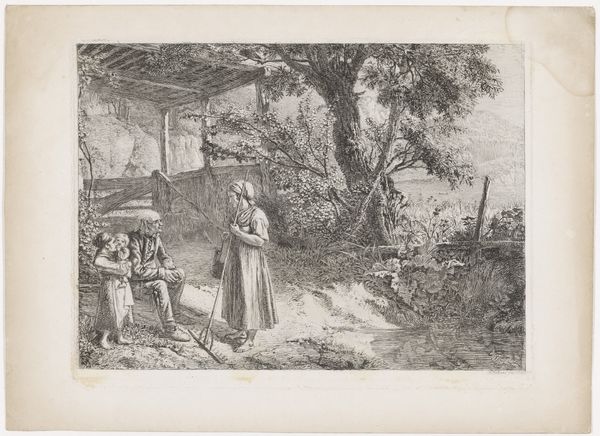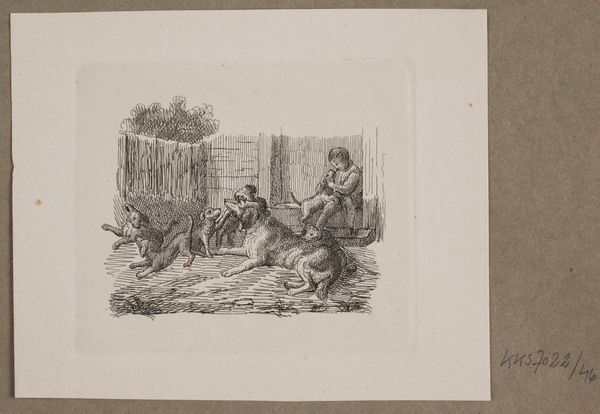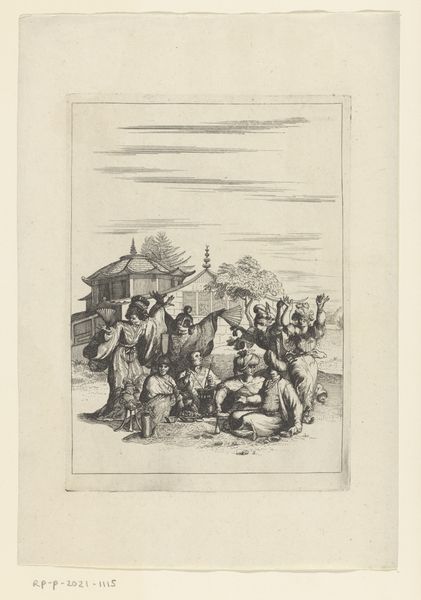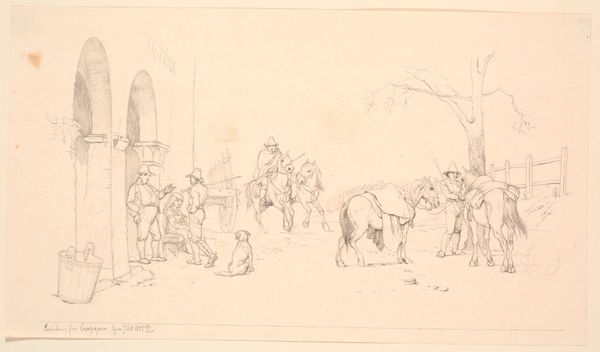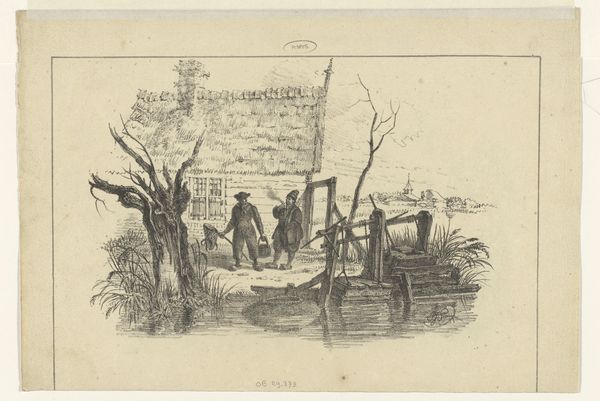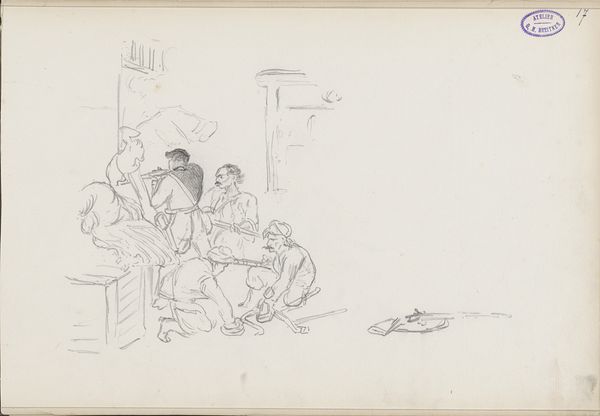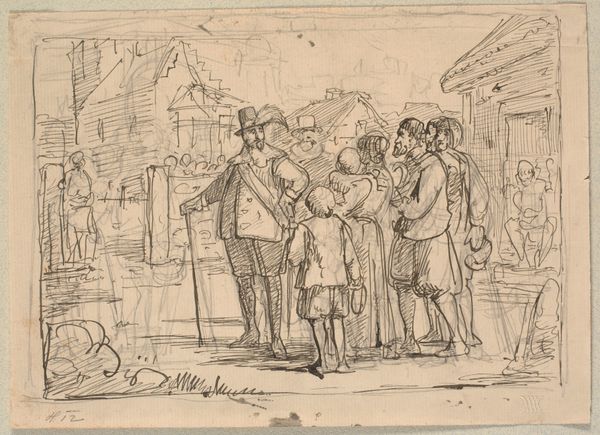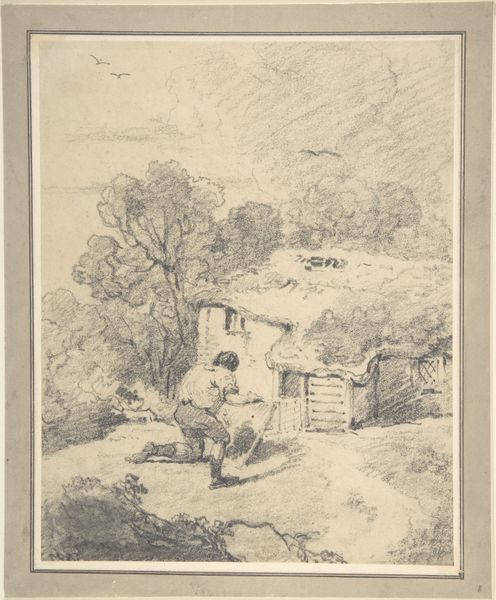
Grædende bondefamilie (illustration til eventyret "Bjergmanden og Tordenvejret") 1824 - 1907
0:00
0:00
Dimensions: 215 mm (height) x 289 mm (width) (bladmaal), 160 mm (height) x 234 mm (width) (billedmaal)
Curator: Looking at Christen Dalsgaard's etching from 1824-1907, "Grædende bondefamilie (illustration til eventyret "Bjergmanden og Tordenvejret")", its melancholic mood immediately strikes me. It's like a faded photograph, capturing a scene that feels both distant and intimately human. Editor: Yes, there's a definite somber tone. I'm immediately drawn to the delicate lines and the almost dreamlike quality of the scene. There's something inherently vulnerable about these figures etched so delicately onto the page. It feels as if I'm witnessing a fragile moment in their lives, almost intrusive. Curator: The piece serves as an illustration for the fairy tale "The Mountain Man and the Thunderstorm". The etching portrays a peasant family outside their home, perhaps dealing with hardship, although what’s actually causing their distress is vague within the frame itself. This lends itself to wider ideas around representations of peasant life, their connection to nature, and ideas of collective vulnerability. Editor: It makes me think about how artists often depict rural life—there is a romantic tendency to either over-simplify the harshness of everyday struggle, or sensationalise it in overly dramatic ways. Does Dalsgaard fall into that trope? It does hint to a larger socio-economic narrative with a family struck by circumstance. Curator: To unpack that, we could consider genre painting conventions in Romanticism; these frequently highlighted sentimental and moralising aspects. Given the tale it illustrates, one angle here may be the relationship between humanity and the natural world—especially pertinent in early 19th-century Romanticism with the rise of industrialization impacting rural populations. The etching captures the social anxieties linked to changing environments and economic strains for peasant classes, something we could unpack with a look at the rise of social realism as a genre. Editor: Ah, I get that, viewing it more broadly beyond the direct visual narrative! For me, what lingers most are the understated emotions and the intricate rendering. Curator: Precisely. I appreciate that it moves beyond sentimental genre scenes, suggesting larger socio-economic anxieties through careful symbolic renderings, something quite incisive in Danish art historical context. Editor: Agreed. It's a subtle but affecting illustration, reminding us of the intersection between folklore, representation, and history. I find myself seeing the sadness in the work resonating still today with modern climate refugees or disaffected rural communities struggling with post-industrial society, which offers a broader contemporary reflection.
Comments
No comments
Be the first to comment and join the conversation on the ultimate creative platform.
